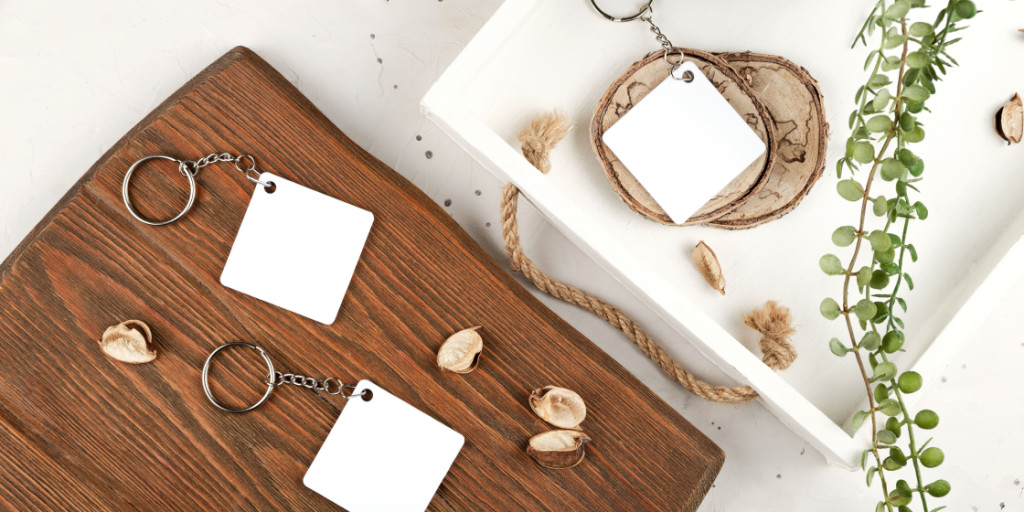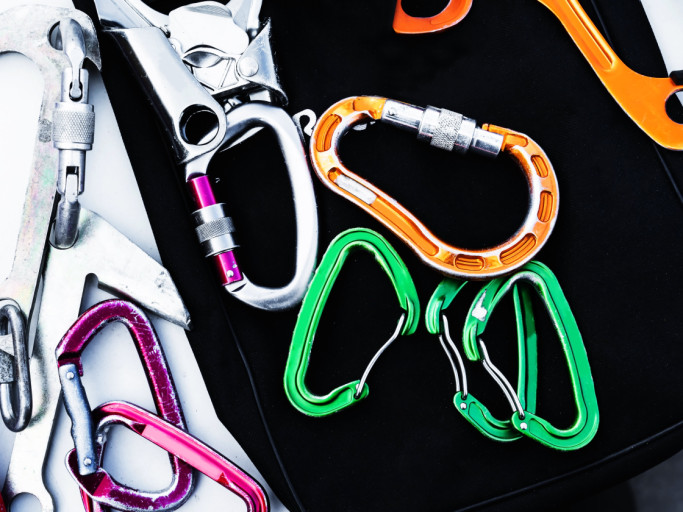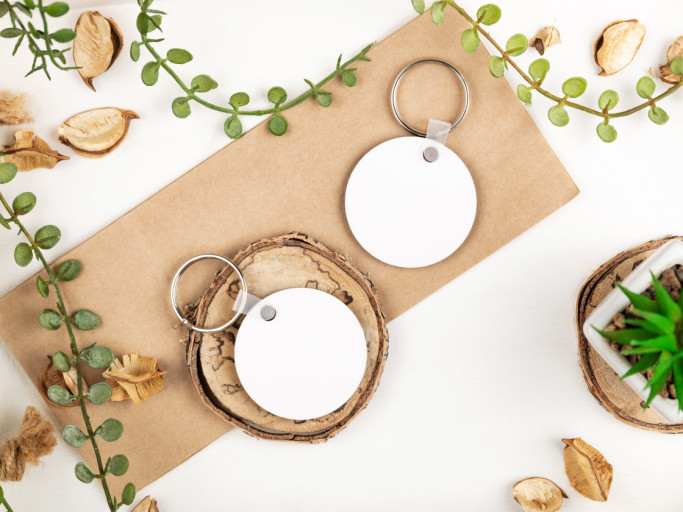The Complete History of Custom Keychains: From Ancient Egypt to the Digital Age
Date posted: 2nd July 2024 in Keychains
Last updated: 11th July 2024

Keychains, an everyday item we often take for granted, have a fascinating history that spans millennia. From their humble beginnings as simple rings to the modern-day custom keyrings we use to promote businesses; keychains have evolved significantly. Let's take a journey through time to explore the rich history of keychains and their transformation into essential accessories for personal and promotional use.
The Early Days: Ancient Egypt
Keychains have an extensive and intriguing history that dates back to the earliest days of key-making. Originally made from natural materials like bone or wood, keychains were primarily used to keep keys secure. As early as 4000 BC, ancient Egyptians crafted keyrings from leather or animal hides, which they often wore around their wrists.
The role of keychains, however, went beyond merely holding keys; they also had significance as charms and talismans. Around 600 BC, the Celts believed that a rabbit's foot on a string could bring luck and improve fertility. Similarly, hedgehog amulets, like those on display in New York's Metropolitan Museum of Art, were seen as lucky to the Ancient Egyptians because hedgehogs were thought to be resilient animals capable of enduring harsh conditions.
In the Middle East, the "evil eye" talisman, typically shaped like an eye and hung at the end of a rope, was used to ward off negative energies. Many other civilizations used different lucky charms attached to strings or chains in this manner too. Even today in Japan, tying three keys together is considered fortunate, as it is believed to unlock doors to love, health, and wealth, continuing the keychains' mystical and cultural legacy.
Hedgehog Amulet: The Metropolitan Museum of Art
The Middle Ages: Symbolism
During the Middle Ages, keychains were primarily crafted from natural materials like bone, but they also began to incorporate metal. They often featured detailed engravings with religious or symbolic motifs.
By the 13th century, as locks grew more complex and required larger keys, keychains and rings expanded in size. These larger keyrings were typically made from iron or brass and designed to hold multiple keys. They commonly included loops or hooks that made it easy to attach or remove keys.
From about 1100 to 1500, a common keychain design consisted of a single piece with an oval loop and a central crossbar that divided a circular hole and an oval hole. The oval hole had a small gap with pointed ends, designed to easily slide objects on and prevent them from slipping off. This type of keychain, known as a chatelaine, was usually worn hanging from a belt or girdle.
Early Medieval chatelaine: Wikipedia
The 19th Century: The Birth of the Modern Keychain
In the 19th century, keychains became more common because of the Industrial Revolution, which allowed them to be mass-produced. They were not only useful for keeping keys organized and preventing them from being lost; they also became a way to show off wealth. Rich people might have keychains made of precious metals with decorative stones and personalized engravings, making them popular gifts for special events like weddings and graduations.
A key figure in the history of keychains is Frederick J. Loudin, who invented the keychain fastener in 1894 to help prevent theft by keeping keys securely fastened to doors. Loudin was a member of the Jubilee Singers, an African-American choir that performed worldwide, including for Queen Victoria. Unfortunately, due to the racial prejudices of his time, Loudin didn't receive the recognition he deserved for his invention during his lifetime, although today he is honored by the Black Inventions Museum.
Materials like aluminum, stainless steel, and plastic also became more available during this time, leading to innovations like the first keychain clips.
Frederick Loudin: The Black Inventions Museum
The 20th Century: Cars and Modernity
Keychains might not have gained such widespread popularity if it weren't for Henry Ford's Model T, introduced in 1908 in Detroit. This car was significant not just for its impact on the automotive industry but also because it was one of the first to require keys for ignition, a major shift from the earlier models that needed to be cranked by hand.
As cars became more commonplace, so did the need for keychains. Car dealerships started giving out branded keychains as a way to strengthen bonds with their customers. This practice became even more prevalent after World War I when cars became more powerful and larger, equipped with electric starters that required keys. Major automobile manufacturers like Chrysler, Ford, and Chevrolet began to include personalized keychains with their logos as part of the car purchase, turning them into special gifts that encouraged brand loyalty.
The evolution of keychains also owes much to Samuel Harrison, a Boston inventor. In 1922, he patented the split key ring, a simple yet ingenious design that drastically improved how keys were managed. Before this innovation, keys were typically carried on chains or leather straps, making it cumbersome and frustrating to find the right key. Harrison's design allowed for easy addition and removal of keys, helping to keep them organized and tangle-free. His invention quickly became a staple in households worldwide.
In the early 20th century, keychains also began to serve a decorative purpose. Crafted from materials like silver and gold, they were often given as gifts. During World War I, soldiers carried keychains into battle, using them to hold photos of loved ones or good luck charms.
The 1920s and 1930s saw the advent of new materials like plastic and Bakelite, which allowed for mass production of keychains, making them more affordable and widely available. They became popular promotional items, adorned with company logos or messages.
Following World War II, the rise in travel and tourism, particularly in the US, led to the proliferation of gift shops selling keychains as souvenirs. This encouraged tourists to collect different designs from the places they visited, further boosting the popularity of keychains.
Guntar Feldmann - stock.adobe.com
When Did People Start Collecting Keyrings?
People began collecting keychains in a big way around the mid-20th century, especially after World War II. As travel and tourism picked up, especially in the US, more gift shops opened, offering various souvenirs including keychains. The more places’ people visited, the more keychains they bought, often starting collections as memories from different locations.
“According to Guinness World Records, Brent Dixon of Georgia, United States currently holds the world record for the largest collection of keychains, at 41,418 non-duplicated ones.” – Guinness Book of Records
Today, keychains are more than just practical items for holding keys; they are also personal style statements. They can show off your personality and even serve as little reminders to stay motivated or to cheer you up. Keychains have evolved from simple good luck charms to accessories that carry a deeper meaning and play a subtle yet impactful role in our daily lives.
The 21st Century: The Digital Age
In today's fast-moving tech world, it's no shock that even the simplest things in our lives are changing. As we move further into the digital age, traditional keys are becoming less common, replaced by high-tech security like electronic systems, smart locks, and biometric scans that fit smoothly into our daily routines.
Smartphones have evolved beyond just making calls; they are now crucial for security. They hold digital keys in apps, letting us unlock doors or start cars with just a tap or a click, all without the old-fashioned key jingle.
So, what happens to traditional keychains now? Well, they're not going away anytime soon. Instead, they're adapting to new tech, possibly using things like NFC or RFID to work with digital locks. Imagine a keychain that not only carries your physical keys but also works as a digital pass for your office or gym.
Even with new technology, keychains will keep their sentimental value. They're more than just tools; they're mementos of personal and family histories, carrying charms and tokens that mean something to us. And there's still something satisfying about the sound of keys jingling in your pocket – a simple joy and a reminder of the physical world in our increasingly digital lives.
The Future of Keychains
As we look to the future, like everything, keychains will likely continue to evolve with the changing times. With the rise of smart technology, we might see the integration of digital features such as GPS tracking or electronic access capabilities.
The history of keychains is a testament to human ingenuity and the desire to blend functionality with personal expression. Whether you’re carrying a custom keychain that reflects your personality or a promotional keychain that supports your favorite brand, these small accessories hold a significant place in our daily lives.
At Everything Branded, we celebrate this rich history by offering a wide range of custom and branded keychains to suit every need. Explore our collection and find the perfect keychain to make your keys truly unique!
Timeline
- 1700 BC: The Metropolitan Museum of Art in New York displays an ancient Egyptian amulet shaped like a hedgehog on a string, thought to be an early form of the keychain from the Memphite region.
- 600 BC: The Celts wear rabbit's feet as amulets, believing they bring luck and enable communication with spirits.
- 1893: The Chicago World's Fair introduces one of the first souvenir keychains.
- 1894: Frederick J. Loudin, a well-known Jubilee singer, invents the carabiner keyring.
- 1914: During World War I, soldiers create lucky charms from leftover shell casings to hang on chains.
- 1922: Samuel Harrison, a Boston inventor patents the split key ring,
- Late 1920s: Keychains gain popularity as tourist souvenirs, especially during the Liberty Bell centennial in Philadelphia with special copper keychains.
- 1939: The National Baseball Hall of Fame gives out personalized metal keychains at its first induction ceremony.
- 1942: Soldiers carry lucky keychains throughout World War II.
- 1946: The White House opens its basement gift shop under President Harry S. Truman, selling collectible metal keychains.
- 1950: Automobile manufacturers like Ford start offering personalized key fobs with vehicle purchases.
- 1960: A surge in keychain popularity occurs in France, described as a "key ring tsunami" by collector George Mangion.
- 1970: Keychains diversify in design, becoming popular holiday gifts.
- 1980: Companies begin using keychains for advertising, featuring their logos or messages on paper inside plastic cases.
- 1990: Rubber keychains become a hit with businesses for their affordability and ease of customization.
- 2000s: Multi-function keychains become popular, featuring tools like flashlights, measuring tapes, and nail clippers.
- 2009: The digital age inspires new designs in keychains, including electronic and personalized photo key rings.
- 2011: Keychains with tiny live animals in colored liquid are sold in China, sparking controversy.
- 2016: The Chicago Cubs' World Series victory is commemorated with specially designed keychains.
- 2019: Bluetooth and connected key fobs appear, helping users locate lost keys.
References
The Ingenious Invention of the Key Ring and Its Path to Popularity. Medium. Available at: The Ingenious Invention of the Key Ring.
History of Key Rings. Encyclopedia Pub. Available at: Encyclopedia Entry on Key Rings.
History of Keys. History of Keys. Available at: History of Keys
Largest Collection of Keychains. Guinness World Records (Archived). Available at: Guinness World Records Archive.
Global Keychain Pendant Market Insights. Spherical Insights. Available at: Keychain Pendant Market Report.
Fob. AlphaDictionary. Available at: AlphaDictionary on Fobs
Keychain Pendant Market Analysis. Cognitive Market Research. Available at: Cognitive Market Research - Keychain Pendant Market
Collection Search - Hedgehog Amulet. The Metropolitan Museum of Art. Available at: Met Museum - Hedgehog Amulet
Keychains Through History. Larsdatter. Available at: Larsdatter - Keychains
Frederick J. Loudin. BlackPast. Available at: BlackPast on Frederick J. Loudin
List of Inventions. The Black Inventions Museum. Available at: Black Inventions Museum
Ford Motor Company Unveils the Model T. History.com. Available at: History.com on Model T
World War I Objects Carried by Infantrymen. History.com. Available at: History.com on WWI Objects
History and Origin of Keychains. La Maison du Porte-Cle. Available at: La Maison du Porte-Cle on Keychain History

Strengthen your brand perception with promotional products
Chat online or call us today on 1800-586-1615
More Articles

What is a Custom Carabiner Key Holder?
19th July 2024 in Keychains

Custom Keychains as Promotional Products: A Compact and Effective Advertising Tool
22nd January 2024 in Exhibitions & trade shows

Are Promotional Custom Keychains Still Relevant? Exploring Their Popularity in the 21st Century
18th December 2023 in Exhibitions & trade shows

What is a Promotional Floating Keychain?
1st May 2024 in Keychains